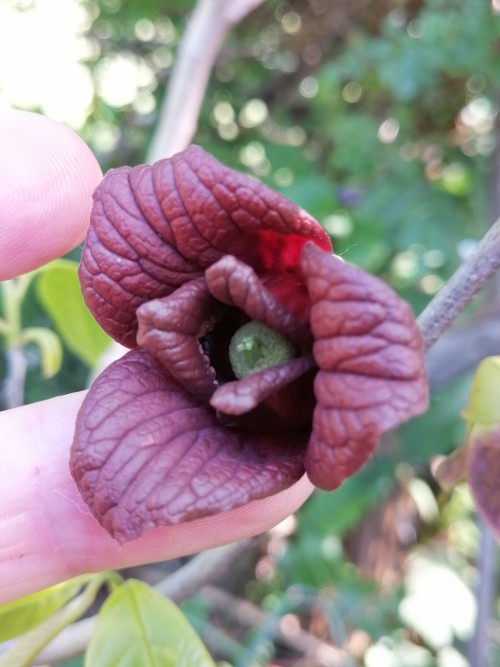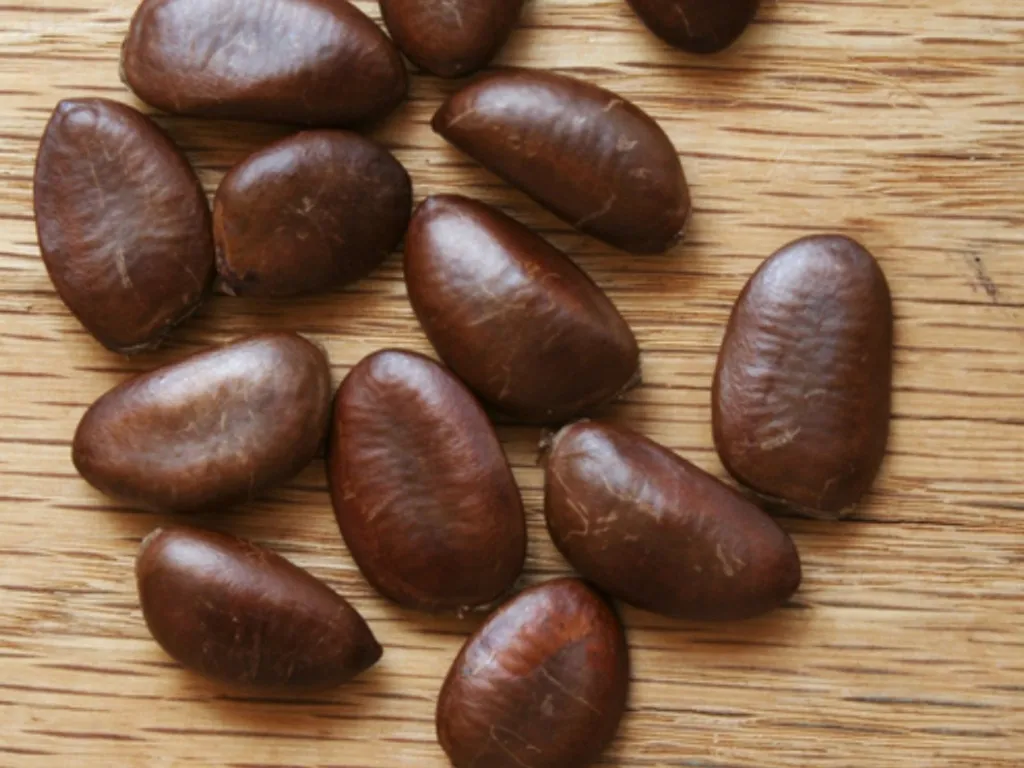Description of Asimina triloba (Pawpaw)
The Asimina triloba, commonly known as the pawpaw, is a deciduous tree native to North America. It is part of the Annonaceae family and is notable for its large, tropical-looking leaves and unique, custard-like fruits.
- Height: Grows to 4–12 m, depending on growing conditions.
- Leaves: Large, oval, and drooping, measuring 15–30 cm long and 7–15 cm wide.
- Flowers: Maroon or purple, bell-shaped flowers 2–5 cm across, blooming in spring.
- Fruit: Oblong or kidney-shaped, 7–15 cm long, with soft, sweet, yellow-orange flesh and large brown seeds.
Propagation
1. By Seed
- Collection: Harvest seeds from ripe fruit (usually late summer to autumn in the southern hemisphere). Remove seeds from the pulp and clean them.
- Stratification: Seeds require cold stratification (1–5°C) for 90–120 days to break dormancy. Store seeds in damp sand or sphagnum moss in a refrigerator.
- Sowing: Sow stratified seeds in early spring (August–September in the southern hemisphere). Plant seeds about 2–3 cm deep in a well-draining potting mix.
- Germination: Germination can take 1–3 months. Keep the soil moist and warm (20–25°C).
2. By Grafting
- Pawpaw trees can be propagated by grafting for better fruit quality and consistent characteristics. Use compatible rootstock and graft in late winter to early spring (July–August).
Cultivation
1. Climate and Soil
- Climate: Prefers temperate to subtropical climates. It requires warm summers (20–30°C) and winter chill for dormancy.
- Soil: Grows well in fertile, well-drained soil with a slightly acidic to neutral pH (6.0–7.0).
2. Planting
- Plant in full sun or partial shade. Young plants benefit from some shade to prevent leaf scorch.
- Space trees about 3–5 m apart.
3. Watering
- Requires consistent moisture, especially during establishment and fruiting. Avoid waterlogging.
4. Pruning
- Prune in late winter (June–July) to remove dead or crossing branches and encourage airflow.
5. Fertilizing
- Apply a balanced fertilizer (e.g., 10-10-10 NPK) in spring and mid-summer.
6. Pest and Disease Management
- Generally pest-resistant but may experience leaf spot or root rot in poorly drained soils.
Uses and Benefits
-
Edible Fruit
- Pawpaw fruit has a creamy texture and a flavor resembling a mix of banana, mango, and melon.
- Used fresh, in desserts, or processed into jams, smoothies, or ice cream.
-
Nutritional Value
- High in vitamin C, magnesium, potassium, and antioxidants.
-
Medicinal Uses
- Traditional uses include treating digestive issues, fevers, and inflammation. The fruit and seeds also contain compounds being studied for their anticancer properties.
-
Wildlife Habitat
- Provides food for various animals, including birds and small mammals.
-
Aesthetic Value
- Its tropical-like foliage makes it a beautiful addition to gardens and landscapes.


